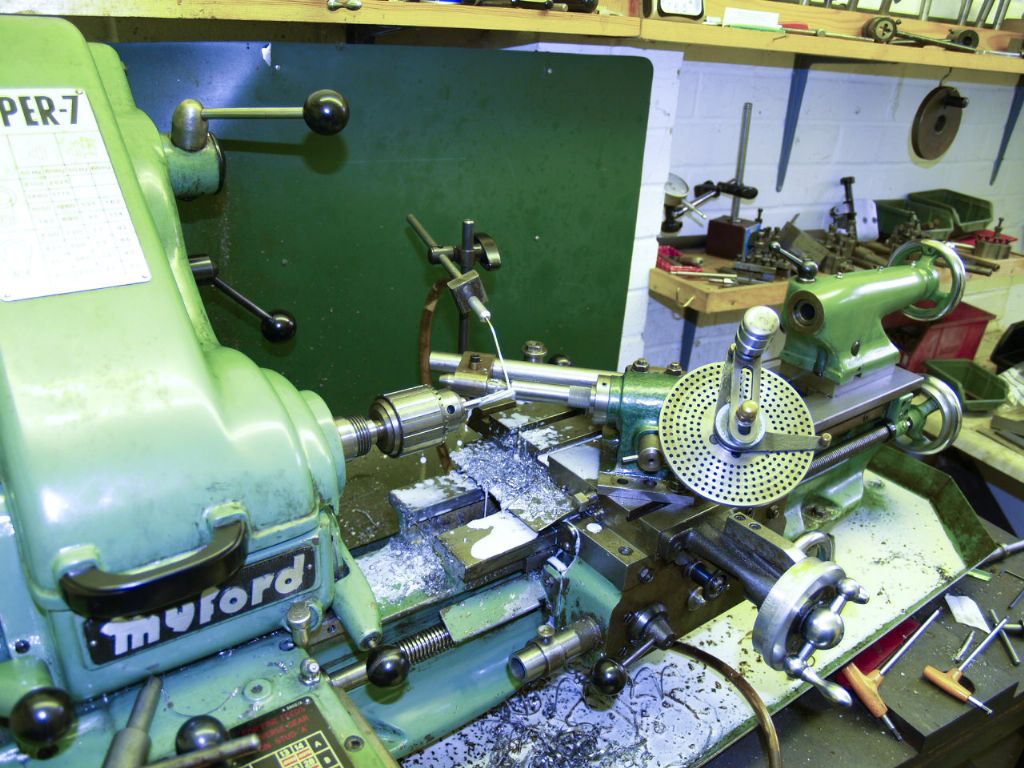Geoff,
I have a Warco WMT 300 which is a similar combination machine. You may be interested in my review of this machine which is extracted from my personal website (amdcustom.com). I hope you will find this useful although it does tend towards the ‘why not’! I especially would highlight the issues about the gap between spindle and ‘mill table’.
I bought the machine for use in my model engineering activities. The machine is very solid and robust. It is rather crudely made, but the finish is adequate in the important areas such as the ways and the machine table. I have been quite pleased with the machine but it does have some significant limitations. A combination machine such as this is very much a compromise from the ideal of having two separate machines. It takes a long time to convert it from milling to lathe operations and I soon got fed up with it and bought a separate milling machine. I would not recommend a combination machine such as this as you will get very frustrated using it. The good and bad points are shown below.
GOOD POINTS
Very solid and rigid. With sharp tools, a good turned finish is achievable.
Pretty good value.
I have always received good service from Warco and would recommend them.
The lathe has a good capacity and is capable of turning large work-pieces. The large spindle bore (25mm) is very handy.
The machine comes with a good range of accessories – faceplate, 3-jaw chuck, change wheels, fixed and travelling steady, centres – although a 4-jaw chuck is the first thing you will want.
The machine is built to reasonable accuracy. It is possible to work to a tolerance of +/-0.02mm without too much difficulty.
Good range of features – reversible motor and lead-screw, screw cutting, taper turning, etc.
BAD POINTS
The cutting tools that come with the machine are next to useless.
The gap between the milling head spindle and the cross slide is very large, even with the spindle fully extended. Unless you are using a very tall workpiece, some sort of raising block will be needed, which largely defeats having such a large machine table. This is a very frustrating feature and required extra equipment and much time to set up, and significantly reduces the functionality and usefulness of the milling/drilling fixture.
The machine is very noisy. The pulley bearings are rough and noisy, particularly in the milling head.
The need to change belts to adjust spindle speed is time consuming and frustrating.
Changing the gear-cutting gears is very time-consuming – the gears are very stiff on their shafts and are extremely difficult to remove. Brute force is often required. Because of this, I seldom resort to screw-cutting or using the power carriage feed. It just takes too long to set up.
Between-centres turning is all but impossible. The width of the milling table severely limits the movement of the carriage in the X direction (along the lathe bed). This means that if the cutting tool is set up to cut the left hand end of the work-piece, you cannot reach the right-hand end and vice versa. This is compounded by the fact that the carriage is prevented from traversing fully to the left by a lathe holding-down bolt, and the lack of significant overhang of the tailstock. Because of this, it is not possible to turn a constant-diameter (or tapered) shaft in one pass. This is a huge limitation.
The lack of tailstock overhang is a problem, which is compounded by the width of the milling table. In addition to the between centres problems (above), the tailstock has insufficient reach to allow drilling of a workpiece held in the chuck. This is compounded when the workpiece is short and a small drill or centre drill is used. I have got around this by using a MT3-MT3 extension sleeve but this does not resolve the between-centres problems – it also compounds the inaccuracy of the tailstock alignment and results in reduced rigidity.
There is some play in the carriage movement. I cannot remove this without over-tightening the gib-strips. This means that with the cutting tool mounted on the left of the cross-slide (as it must be) the tool cuts deeper when traversing the carriage from right to left (and vice versa). The effect is reversed for boring operations. This is not a big problem, but is an annoying niggle.
The 4-way tool post is a useful feature. However, it is not good quality, and repeatability of positioning is poor. For reasonably accurate work, it is necessary to re-measure the depth of cut each time the tool post is rotated. This makes production work unnecessarily time consuming.
Ian S C.






